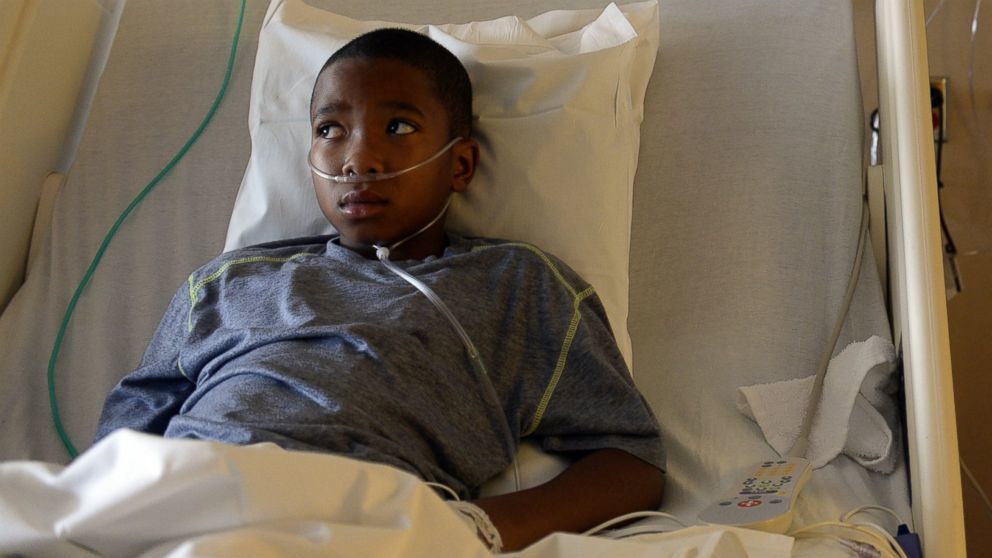All posts by Faris Islam
Ebola Is Here — CDC Confirms first Ebola Case Diagnosed in US

The Ebola virus. Photograph: Frederick Murpy/CDC/EPA Source: http://www.theguardian.com
CNBC is reporting that the Centers for Disease Control (CDC) announced on Tuesday the first officially diagnosed domestic case of the Ebola virus within the US.
Officials say, the yet-as identified patient is under “strict isolation” in Dallas, Texas, apparently confirming a statement issued on Monday by the Texas Health Presbyterian Hospital of Dallas.
Monday night Texas Health Presbyterian Hospital in Dallas released the following statement:
“Texas Health Presbyterian Hospital Dallas has admitted a patient into strict isolation to be evaluated for potential Ebola Virus Disease (EVD) based on the patient’s symptoms and recent travel history. The hospital is following all Centers for Disease Control and Texas Department of Heath recommendations to ensure the safety of patients, hospital staff, volunteers, physicians and visitors. The CDC anticipates preliminary results tomorrow (Wednesday).”
In a press conference, CDC Director Tom Frieden said the patient in question had been traveling in Liberia, where he may have contracted the disease.
“It is certainly possible that someone who had contact with this individual…could develop Ebola in the coming weeks,” Frieden said, but added that “there is no doubt in my mind that we will stop it here.”
According to the CDC website, “The 2014 Ebola outbreak is the largest in history and the first Ebola epidemic the world has ever known.” The virus is know to be transmitted by contact with blood or body fluids (including but not limited to urine, saliva, feces, vomit, and semen) of a person who is sick with Ebola. Objects, such as needles and syringes, that have been contaminated and animals that are infected are also know means of transmitting the virus. At this time it is not believed that Ebola is transmitted through the air or by water.
There is currently no known treatment or cure for the virus.
Complete information on the Ebola Virus can be found on the CDC website at CDC.gov.
The CNBC story can be found here.
Dallas CBS News Report.
Could Feds enact emergency measures?
Special Center for Disease Control Health Alert Network Advisory — Link Between Enterovirus 68 and Paralysis
Occasionally, we will have special announcements of current health issues that we feel everyone should know about, and we do our best to deliver as much information we can about them. In this case, it is the alarming rise in cases of Enterovirus nation-wide, and concerns both health officials and the Centers for Disease Control (CDC) have about this mysterious illness. Over the next few weeks we will be following this developing story and provide links to as much information on its spread, known symptoms, and what health and CDC officials recommend the public can do to guard against it.
On September 26, 2014, the CDC issued an Official Health Alert Network (HAN) Advisory, Acute Neurologic Illness with Focal Limb Weakness of Unknown Etiology in Children. The HAN’s purpose is to spread awareness of the neurologic syndrome and to help determine its geographic spread.
Currently, the CDC is investigating nine cases of the acute neurologic illness among pediatric patients, among the ages of 1-18 years.
According to the report, “Common features included acute focal limb weakness and specific findings on magnetic resonance imaging (MRI) of the spinal cord consisting of non-enhancing lesions largely restricted to the gray matter. In most cases, these lesions spanned more than one level of the spinal cord. Some also had acute cranial nerve dysfunction with correlating non-enhancing brainstem lesions on MRI. None of the children experienced altered mental status or seizures. None had any cortical, subcortical, basal ganglia, or thalamic lesions on MRI. Most children reported a febrile respiratory illness in the two weeks preceding development of neurologic symptoms. In most cases, cerebrospinal fluid (CSF) analyses demonstrated mild-moderate pleocytosis (increased cell count in the CSF) consistent with an inflammatory or infectious process. CSF testing to date has been negative for West Nile virus and enteroviruses, including poliovirus.”
The United States is currently experiencing a nationwide outbreak of EV-D68 associated with severe respiratory disease.
The CDC lists a number of recommendations and provides contact information to report suspected cases:
“Recommendations
- Patients who meet the following case definition should be reported to state and local health departments:
Patients ≤21 years of age with
- Acute onset of focal limb weakness occurring on or after August 1, 2014;
AND
- An MRI showing a spinal cord lesion largely restricted to gray matter.
- State and local health departments should report patients meeting the case definition to CDC using a brief patient summary form (www.cdc.gov/non-polio-enterovirus/investigation/). State health departments should send completed summary forms to CDC by email at limbweakness@cdc.gov.
- Providers treating patients meeting the above case definition should consult with their local and state health department for laboratory testing of stool, respiratory, and cerebrospinal fluid specimens for enteroviruses, West Nile virus, and other known infectious etiologies.
- Health departments may contact CDC for further laboratory and epidemiologic support by phone through the CDC Emergency Operations Center (770-488-7100), or by email at limbweakness@cdc.gov. Confirmation of the presence of EV-D68 currently requires typing by molecular sequencing.”
Happy hospitals make happy patients
 “Imagine a hospital where morale is high, employee turnover is low and patient call buttons rarely go unanswered. That’s exactly the type of culture and service that ‘delights’ patients and makes for the most successful community hospitals in the country, as rated by caregivers and patients.” says John Griffith, professor in the University of Michigan School of Public Health.
“Imagine a hospital where morale is high, employee turnover is low and patient call buttons rarely go unanswered. That’s exactly the type of culture and service that ‘delights’ patients and makes for the most successful community hospitals in the country, as rated by caregivers and patients.” says John Griffith, professor in the University of Michigan School of Public Health.
In a newly published report, Griffith examined the attributes of 34 community hospitals in nine states that have earned the Health Care Sector Malcolm Baldrige National Quality Award, a nationally recognized quality benchmark for various industries. Griffith’s findings suggest that the single-biggest factor in patient satisfaction is hospital employee morale, which starts with outside-the-box thinking at the very top management levels.
According to the study, “These community hospitals had the happiest patients and caregivers, but only because these hospitals departed radically from traditional hospital management.”
We at Prista also firmly believe it often takes a new approach to a problem to find a better answer. One key area in hospital management that we feel could use an overhaul for the majority of organizations is in the Risk, Quality Management and Performance Improvement programs.
For too many, home-grown or ad hoc solutions have been what staff had to use to manage their performance initiatives. Most of these are done with very laborious and time-consuming paper or excel spreadsheets. Very few provide any real insightful or actionable information — only data points. Even more still lack crucial feedback to front-line staff to let them know what the outcome of a negative incident was.
If you are reading this I’m sure you are relating, possibly cringing, at the system I have been describing. A little too close to home? It is programs like this that add to the frustration of being a healthcare worker. Already asked to wear many hats, you are tasked with following a system that seems to have no discernible purpose beyond collecting data.
So, if you don’t have happy thoughts when you think about your current Risk/Quality Management, Performance Improvement system, then you should consider why.
Be happy. Get ActionCue Clinical Intelligence.
Read the full article here.
To learn more about the ActionCue hospital risk management software click here.
Our Top-4 Ways to be happier at work
Better hospital care linked to happy staff
 A study of staff perceptions of quality of care at the National Health Service (NHS) hospitals in England suggest a possible link between higher healthcare staff job satisfaction and better quality of care and patient outcomes.
A study of staff perceptions of quality of care at the National Health Service (NHS) hospitals in England suggest a possible link between higher healthcare staff job satisfaction and better quality of care and patient outcomes.
Published in 2012, and revised in 2013, the study points to evidence that increased workplace and job satisfaction in specific settings is linked to lower mortality rates and increased positive patient outcomes.
The study’s aims were to “…assess the potential of staff satisfaction to be used as an indicator of institutional performance”. Over 60,000 respondents from 147 NHS trusts were included in the analysis.
It may not be surprising to hear that a happier nurse or doctor can provide better patient outcomes. In most professions it would be intuitive to find that a person who is happy in their job is going to be more focused and attentive to the task they are performing. Healthcare should be no exception.
The study did not identify what factors contributed to a happier work environment. So, we thought we would make up our own based on customer feedback and our own personal experience:
- Focus on what you love to do — Clinical staff want to spend more time with patients. DQM’s and RM’s want to be educating and consulting. Neither want to be wasting their time with antiquated systems that don’t contribute to better patient care. If a system or process is making your job harder, and not easier, it is likely time for a new one.
- Be social and communicate — One of the most effective ways to improve workplace happiness (and the subject of an upcoming post) is communication and collaboration with coworkers. Team-building exercises and retreats are fine and well. But, nothing can take the place a real, collaborative workplace. More often than not, that begins with simply talking.
- Know the results of your hard work — From far too many of our clients we hear, “With our old risk/quality systems we never knew the outcome of an incident. We would fill out the reports, submit them, and that was it… I don’t even know where they went.” How demoralizing is it to work your hardest and not know if the energy was worth the effort? If you do not know the outcomes of your hard work, you might want to find out how to change that.
- Work smart, not hard — Throughout history humans have used their intelligence to develop tools to make their jobs easier. However, no matter how advanced a technology is, it has a lifespan. Before long a newer, better way to do the same task is developed. Don’t be guilty of saying “we’ve always done it this way”. More advanced tools save time and money.
We built the ActionCue application for that strict purpose, to make your job easier, improve the quality of care, reduce healthcare costs and, ultimately, to improve patient outcomes.
Don’t just take our word for it though. We have a whole list of subscribers that credit the ActionCue application for their success. Visit our testimonials page and read from just a few of them. With a 100% subscriber retention since 2009, we must be doing something right.
Click here to read the study abstract.
To learn how the ActionCue hospital risk management software click here can make your hospital a ‘happier’ place, click the link above.
Can Mickey Mouse Make Your Hospital Better?
 Many hospitals are banking on better guest services to improve their healthcare
Many hospitals are banking on better guest services to improve their healthcare
Barton Memorial Hospital in South Lake Tahoe, Calif., sent its 900 employees back to school in June to learn how to provide better service.
There’s no doubt, Disney does good customer service. If you haven’t been to the Magic Kingdom before let me describe it for you. From the moment you enter the parking lot you are immersed in a very choreographed experienced. Every detail of the sights and sounds, even smells, that greet you are very deliberate, the length of time you spend waiting in lines all refined to enhance your visit and reduce stress. Why? Well, that is a bit more complex. To boil it down to its simplest, it’s so you have a great time.
Well, this is obvious for an amusement park. Of course you should have a good time. How does this apply to healthcare? Ah ha! Now you’re asking the right questions.
Satisfaction is not the only reason that Disney, and other industries, spend a great deal of time and money to refine and develop pleasurable guest experiences. Cost and return business is a prime factor. Smooth, stress-free lines are beneficial to both hospitals and patients alike — they save time and money. This is just one aspect of their organization that many hospitals have approached Disney for help with.
Happiness may not be the only reason, but we find it’s a big one in healthcare — to patients and staff alike.
It may sound silly to say that a risk or quality management system can literally bring joy to your job. But, only if you haven’t experienced what a platform like ActionCue Clinical Intelligence can do. We may not be Disney, but is certainly raising the spirits of many Risk/Quality Managers just like you by making their jobs a whole lot easier.
So if you don’t smile just a little bit when you think about your current Risk/Quality Management, Performance Improvement system then you need to consider why.
Read the full article here.
Be happy, try ActionCue Clinical Intelligence.

